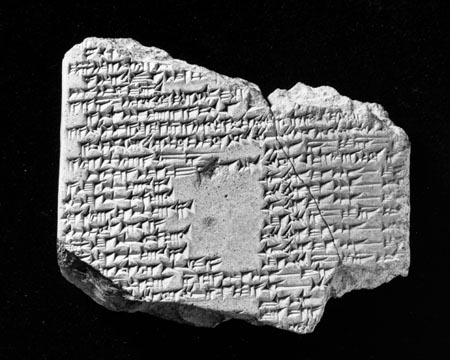

InscriptiFact: A Networked Database of
Ancient Near Eastern Inscriptions Project Overview
by Bruce Zuckerman, Marilyn Lundberg and Leta Hunt
The InscriptiFact Project is a database designed to allow access via the Internet to high-resolution images of ancient inscriptions from the Near Eastern and Mediterranean Worlds. The target inscriptions are some of the earliest written records in the world from an array of international museums and libraries and field projects where inscriptions still remain in situ. Included are, for example, Dead Sea Scrolls; cuneiform tablets from Mesopotamia and Canaan; papyri from Egypt; inscriptions on stone from Jordan, Lebanon and Cyprus; Hebrew, Aramaic, Ammonite and Edomite inscriptions on a variety of hard media (e.g., clay sherds, copper, semi-precious stones, jar handles); and Egyptian scarabs. These ancient texts represent religious and historical documents that serve as a foundation and historical point of reference for Judaism, Christianity, Islam and the cultures out of which they emerged.
The name "InscriptiFact" is intended to convey the concept of a scholarly archive based on "facts" about "inscriptions" and "artifacts." The initial participants, West Semitic Research (WSR), University of Southern California (USC) West Semitic Research Project and the University of Illinoisí (UI) Ugaritic Texts Digital Edition Project, are acknowledged leaders in the application of photographic techniques to capture and analyze data of ancient texts. Their collective image archives comprise the largest assemblage of image data for these texts in the world. The archive now contains about 100,000 images with more being added every day. The consortium continues to develop and apply the latest photographic and imaging techniques to create the most legible images of these texts found anywhere (Figure 1).
Figure 1. Advanced photographic techniques result in substantial information gain.

This Dead Sea Scroll (4Q2 Genesis b ) illustrates the significant information gain that can result from using advanced photographic techniques (in this case, infrared lighting) when documenting ancient texts. Members of the InscriptiFact consortium are actively involved in research in which a wide range of techniques and procedures are used to capture high quality and high resolution images of a variety of ancient inscriptions.
InscriptiFact’s primary goal is to provide solutions to longstanding problems that have inhibited access to ancient documents. Through InscriptiFact, original texts whose fragments are frequently scattered among museums, libraries and archaeological sites can be brought together as virtual documents that are viewed and distributed in an Internet environment. (See Figure 2.)
Figure 2. Ancient texts often exist as a collection of fragments.

Fragments of Mis-Pi Incantation 6/8 (“Opening of the Mouth” Incantation) illustrate the fragmentation common to ancient texts.
InscriptiFact also provides images that are of high resolution rather than the low-resolution images typical of image data bases today. Such high-resolution data is essential if scholars wish to make full use of digital technologies for analysis. The availability of high resolution, precision-matched images at different levels of magnification dramatically increases a scholar's ability to make subtle comparisons that are crucial for decipherment—comparisons that would be impossible employing conventional methods.
InscriptiFact provides comprehensive data, from the earliest image archives to the most technologically sophisticated images that can be produced today in order to give scholars the widest possible range of choice on which to base their analyses. (See Figure 3.)
Figure 3. Side-by-side comparison of a section of a Ugaritic tablet.
While the black and white image on the right, captured in the 1930s, basically matches the color image on the left, captured in the 1990s, there are significant differences. For example, the older image contains information that no longer exists in the newer image, although the newer photograph is the superior image. The ability to view images such as these side-by-side allows researchers to gain far more data than was previously possible.
InscriptiFact is intended to benefit students, philologists, archaeologists, linguists, and other scholars interested in these areas of study as well as to serve as an educational resource for the general public. InscriptiFact Internet Database I is now available as a platform independent application and database with approximately 20,000 images, with additional images to be posted by the end of 2007. For more information, write to Li Hunt, lihunt@usc.edu, or Marilyn Lundberg, mlundber@usc.edu.
| Home Page | About Us | Instructions | News and Articles | What's New |
Copyright ©1999-2004 West Semitic Research. All rights reserved.